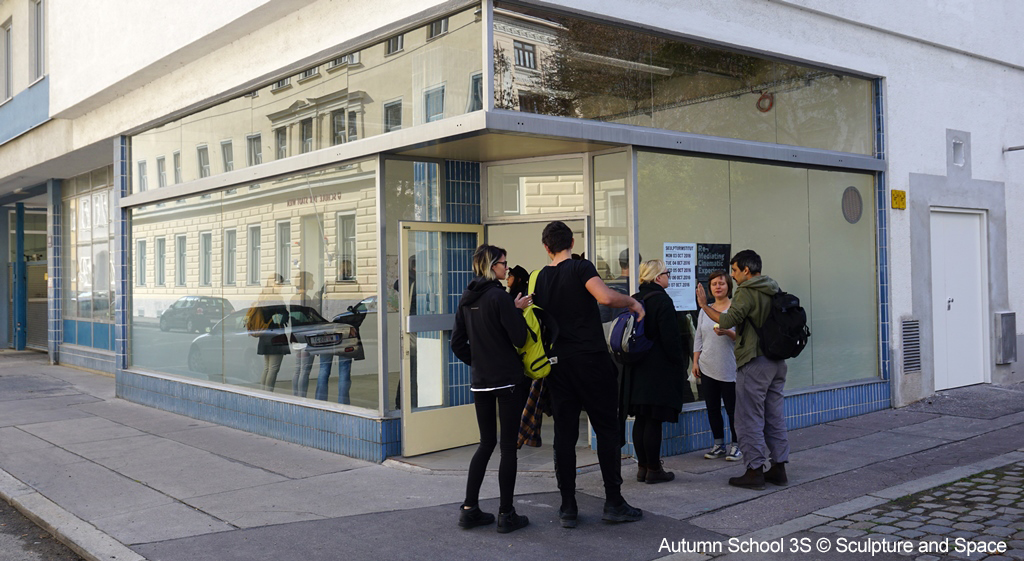Approaching the 3S – the Spatial, the Social, and the Sensorium
An International Autumn School on the Materiality of Cultural Practices in Social Space
Artistic and cultural practices, be they performance art, visual art or mundane practices like visiting a museum or attending a cultural event, always take place in specific social contexts and in specific spatial arrangements. The material qualities of these practices provide the basis for perception and the ascription of meaning: what can be seen, heard, felt, smelled etc. is individually processed and interpreted, while historically settled socio-cultural conventions heavily influence these processes. Artistic and cultural practices are also modes of appropriating space, thus producing different spaces (public, private, collective etc.) and shaping tangible places.
In a series of lectures and workshops, these issues were tackled at the Department of Sculpture and Space at the University of Applied Arts Vienna, in October 2016. International artists, researchers and scholars from a wide range of professions and academic disciplines gathered for a week to reflect on the theoretical input offered by the speakers and to work on concrete case studies. The Autumn School, organized by Eva Kernbauer, Luise Reitstätter and Hans Schabus, also allowed for consultations with the speakers in order to discuss specific questions concerning individual artistic or research projects.
Starting on Monday, Hans Schabus, artist and head of the Department Sculpture and Space, gave an example of space-shaping in a rural context. In his project Lassnitz (2012) he had a disused 1930s railway bridge from Austria transferred to a land art park in Germany. Thus, he transformed a former object of utility into an art object, while at the same time referencing a nostalgic narrative of the steel industry and working class pride. In his workshop, Schabus sent the participants out to explore the neighborhood of the venue (Paulusplatz in Vienna’s third district) and to collect material for a collectively produced sculpture. While the artistic quality of this work was intensely discussed, the field trip also allowed the participants to get a sense of place and explore nearby spaces of transformation (the so-called Neu Marx).
On the next day, Volker Kirchberg, professor of the Sociology of the Arts at Leuphana University in Lüneburg, shifted the focus of attention to museums. He discussed the potential benefits of museums for societies, for example, their function as mediators for antagonistic groups or as spaces for civil activism. Kirchberg sketched out a museum typology ranging from the responsive to, among others, the inclusive and the contesting museum. He didn’t stick to theoretical concepts but had the participants work on a specific case, illustrating the complex of social actors, public authorities, historical settings and questions of funding that museums as social institutions are confronted with.
Xenia Kopf ( 2017): Approaching the 3S – the Spatial, the Social, and the Sensorium. An International Autumn School on the Materiality of Cultural Practices in Social Space. In: p/art/icipate – Kultur aktiv gestalten # 08 , https://www.p-art-icipate.net/approaching-the-3s-the-spatial-the-social-and-the-sensorium/


 Artikel drucken
Artikel drucken Literaturverzeichnis
Literaturverzeichnis